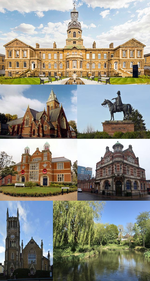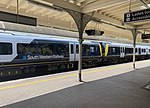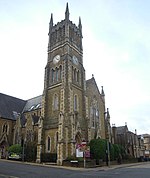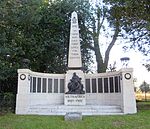Hippodrome, Aldershot
1913 establishments in EnglandBuildings and structures demolished in 1961Buildings and structures in AldershotEngvarB from June 2014Former music hall venues in the United Kingdom ... and 3 more
Former theatres in EnglandTheatres completed in 1913Theatres in Hampshire
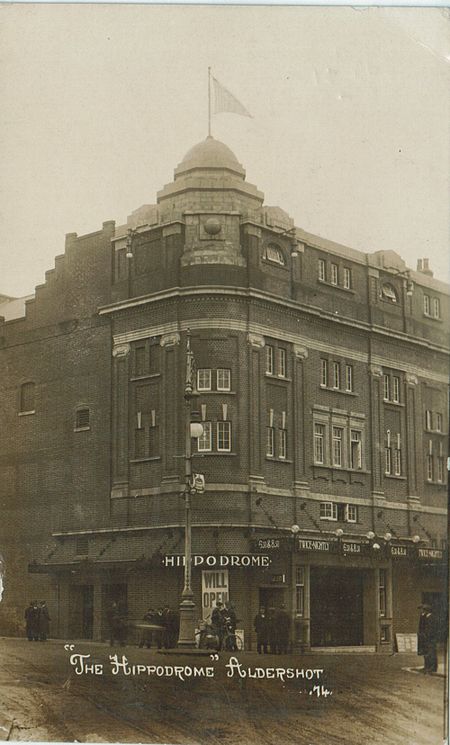
The Hippodrome was a theatre in the town of Aldershot in Hampshire. It operated as a venue for variety shows, pantomimes, musical comedies and other shows from 1913 to 1961. When Peter Sellers appeared there in 1948 he complained that the band accompanying his drum act were four bars behind as they were eating their sandwiches while they were playing.
Excerpt from the Wikipedia article Hippodrome, Aldershot (License: CC BY-SA 3.0, Authors, Images).Hippodrome, Aldershot
Birchett Road, Rushmoor
Geographical coordinates (GPS) Address Nearby Places Show on map
Geographical coordinates (GPS)
| Latitude | Longitude |
|---|---|
| N 51.2476 ° | E -0.7618 ° |
Address
Birchett Road
GU11 1LZ Rushmoor
England, United Kingdom
Open on Google Maps
